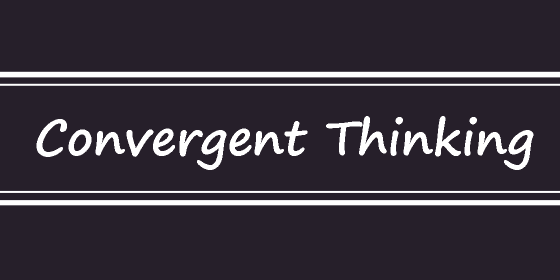Convergent Thinking

Convergent thinking is a cognitive process that involves analyzing and evaluating multiple ideas, options, or solutions to arrive at a single, optimal answer or decision. It is the opposite of divergent thinking, which focuses on generating a wide range of creative and diverse ideas. Convergent thinking aims to find the most practical and effective solution to a well-defined problem or challenge.
Key characteristics of convergent thinking include:
- Focus on a Solution: Convergent thinking centers on identifying a specific answer or solution to the problem at hand.
- Evaluation: It involves critically analyzing and comparing the different ideas or options to determine their strengths and weaknesses.
- Logic and Reasoning: Convergent thinking relies on logical reasoning and objective analysis to arrive at a conclusion.
- Elimination of Less Viable Options: The process involves eliminating less feasible or less effective ideas to narrow down the choices.
- Decision Making: Convergent thinking ultimately leads to a decision or a definitive solution based on the evaluation of the available options.
Convergent thinking is particularly useful in situations where there is a clear goal or well-defined problem that requires a specific and optimal solution. It is commonly applied in problem-solving scenarios that have a single correct answer or in decision-making processes where choices need to be made among different alternatives.
After the divergent thinking phase, which allows for the generation of a broad range of ideas, convergent thinking comes into play to refine and select the most promising options for further development or implementation. Both thinking styles, divergent and convergent, complement each other in the creative process, with divergent thinking fostering creativity and innovation, while convergent thinking brings structure and focus to the decision-making process.
By leveraging both divergent and convergent thinking, individuals and teams can strike a balance between exploration and analysis, leading to effective problem-solving and decision-making, ultimately resulting in successful and practical outcomes.